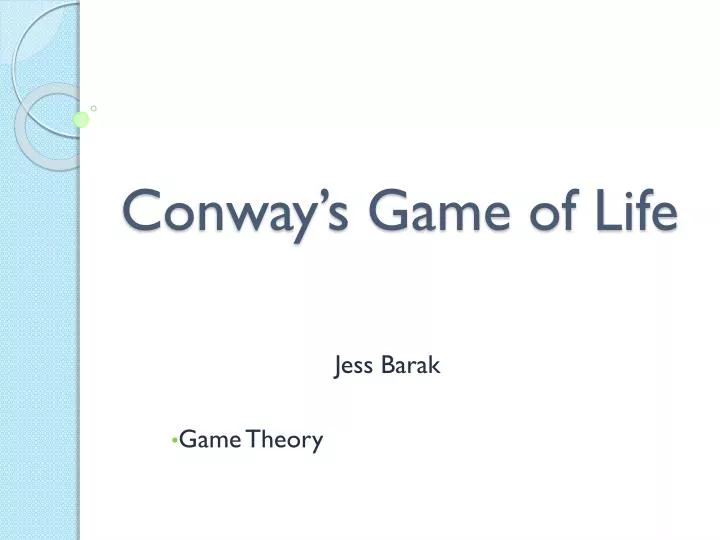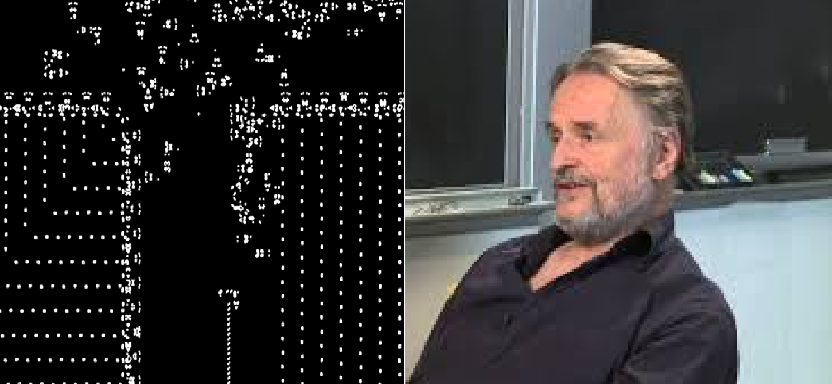
A node changesits excited state into the refractory state and itsrefractory state into the rest state unconditionally. Every resting node isexcited if exactly 2 of its 8 (in two-dimensionallattice) or exactly 4 of its 26 (in three-dimensionallattice) closest neighbors are excited.
Conway game of life update#
We study two- and three-dimensional latticesnodes of which take three states: rest, eccited, andrefractory, and deterministically update their states indiscrete time depending on the number of excited closest neighbors. type style transfer and the other a OpenAI CLIP based version where a prompt can be given to train NCAs to perform that transformation.
Conway game of life how to#
This paper contains how to use NCAs to transform images.

This new method provides the ability to convert any image into a target type that, like the CNN method mentioned previously, uses the same automatic data update rules over and over again. The method presented in this article is similar to more recent methods, but takes advantage of a new class of deep learning methods, deep neural automation. The method of performing this transformation takes many forms, from the original method that directly optimizes the image pixels to more recent forms that form the CNN form to create a generic transport network. The expressive masking feature of mainframe vision models such as VGG19 is used as a lossy function. Pioneered by Gatys et al, this class of methods makes it possible to convey styles, textures, patterns, and more. type style transfer and the other a OpenAI CLIP based version where a prompt can be given to train NCAs to perform that transformation.Īrt Style Transfer is part of the rapidly growing AI Art community of recent times.

Art Style Transfer is part of the rapidly growing AI Art community of recent times. As a result of similar interactions between both as a health-based play. We used the game to investigate the complexity of symbiopoiesis and evo-devo, as well as the abstract hypothesis: that similarities occur at many levels such as cells, animals, the natural community etc. We demonstrate the use of experimental computer simulations and suggest large extensions with new experimental tests. We compare and contrast two epigenetic ideas, developed by both Turing and Edelman, as used in Game of Life and its elements. We show that the development processes are inseparably linked components of a single biological system, similar to the symbiopoiesis integration processes. It is also used in other biological processes, such as symbiopoiesis. The purpose of the game was to investigate the emergence of natural groups. For this reason, Game of Life was often used. The rules continue to be applied repeatedly to create further generations.In biology, automata mobile games and computer simulations are often used as heuristic tools to investigate the impacts and impacts of different perspectives. The first generation is created by applying the above rules simultaneously to every cell in the seed?births and deaths happen simultaneously, and the discrete moment at which this happens is sometimes called a tick (in other words, each generation is a pure function of the one before).

The initial pattern constitutes the seed of the system. Any dead cell with exactly three live neighbors becomes a live cell. Any live cell with two or three live neighbors lives on to the next generation. Any live cell with more than three live neighbors dies, as if by overcrowding. Any live cell with fewer than two live neighbors dies, as if caused by underpopulation. At each step in time, the following transitions occur:ġ.

Every cell interacts with its eight neighbors, which are the cells that are directly horizontally, vertically, or diagonally adjacent. The universe of the Game of Life is an infinite two-dimensional orthogonal grid of square cells, each of which is in one of two possible states, live or dead.


 0 kommentar(er)
0 kommentar(er)
